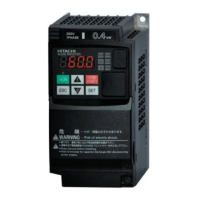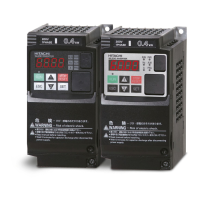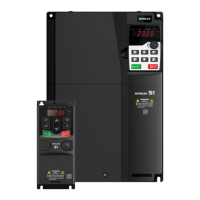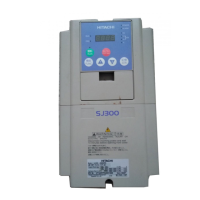Chapter 8 Mandatory Setting for Motor Drive and Test Run
8-1-10
■ Constant torque characteristics
Use this setting when using a constant torque motor.
(Example 2) Constant torque characteristics: 3-phase 200 V, 1.5 kW, Normal duty, Electronic
thermal level = 8.0 A
If "Electronic thermal decrease function enable [b910]" ≠ 00, the electronic thermal for the
motor and the electronic thermal for the inverter operate independently. Regardless of the
"Electronic thermal level [b012]", the electronic thermal for the inverter operates according to
the constant torque characteristics based on the inverter output current of normal duty/low
duty rating as shown in the above figure.
For protection of the inverter main unit, the reduction rate is applied as shown in the figure
above in the low-speed range of 3 Hz or less.
When using a self-cooling motor whose cooling capability is decreased in the low speed range,
take care of the heat generation of the motor. Depending on the heat generation characteristics
of the motor, use the reduced torque characteristics or free setting.
■ Free electronic thermal characteristics
The electronic thermal characteristics (reduction rate characteristics) can be freely set to
protect the motor according to the load.
(Example 3) Electronic thermal free setting: 3-phase 200 V, 1.5 kW, Normal duty, Electronic
thermal level [b012] = 8.0 (A)
In case that "Electronic thermal characteristic selection [b013]" is set to "Free setting (02)" with
[b016]/[b018]/[b020] set to the default 0.0 A, [E05] occurs immediately after inverter running.
Set the frequency setting of free electronic thermal in the order of [b019], [b017], and [b015].

